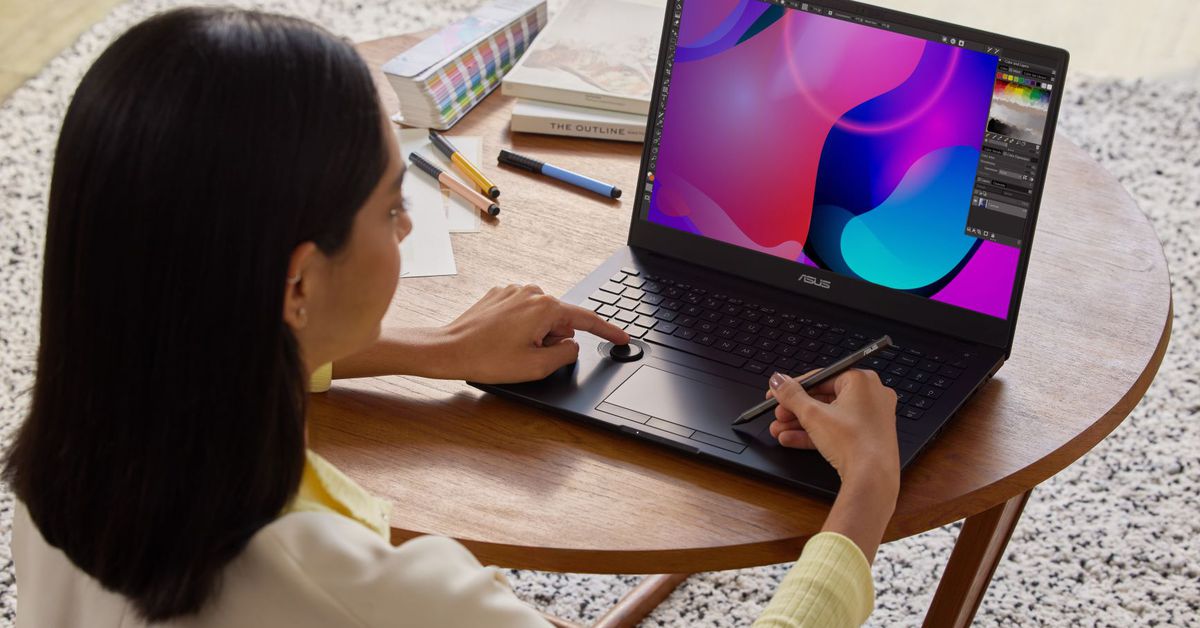
Samsung Display is following through on its promise to ramp up OLED production. The company has begun mass-producing laptop-sized 90Hz OLED panels, which will appear in multiple upcoming 14-inch laptops from Asus.
“The demand for laptops is increasing steadily as working from home and remote learning become the new norm,” Asus Vice General Manager Y.C. Chen said in a statement. “OLED displays can meet consumers’ various needs as they’re using laptops for school, virtual meetings, video streaming, gaming, and more.”
In a statement, Samsung Display said, “The 90Hz OLED panel offers more options for consumers who are looking to enjoy high-performance content on their laptops. With our innovative OLEDs, we’re further pioneering and leading the market in display technologies that offer superior image quality.”
Samsung Display first announced that it would soon begin mass-producing OLED panels back in January, though it did not specify a list of partners. “OLED panels can best satisfy the diverse consumer needs for laptops used in telework, online education, video streaming, and gaming,” the company stated at that time.
While this is Samsung Display’s first official confirmation that mass-production has begun, the announcement shouldn’t come as a surprise to anyone who’s been watching the laptop market. With a few exceptions, OLED has largely been featured on large, high-end laptops in recent years — but it’s soon to become much more commonplace in smaller and more affordable notebooks, if recent OEM announcements are anything to go by. In the past month, major manufacturers including Asus and Lenovo have announced a slew of OLED laptops across sizes and price tags, many with a 90Hz option.
Per Samsung, the new 90Hz panels will appear on an upcoming 14-inch Zenbook (presumably the Asus Zenbook 14X) and 14-inch Vivobook Pro.
The Zenbook 14X, which Asus announced September 2nd, will be available with either a 4K OLED HDR display or a 2.8K OLED 90HZ display, with models starting at $1,399.99. (That’s a jump from Asus’s most recent ultraportable OLED Zenbook, the Zenbook 13, which has an FHD OLED screen and starts at $799.99.)
Asus has also outfitted a number of its product lines with new OLED panels. Its ProArt StudioBook 16 OLED and ProArt StudioBook 16, expected in Q4, are among the first 16-inch laptops to include 4K OLED HDR displays. The 14-inch, 15-inch, and 16-inch models in the budget-oriented VivoBook line (starting at $749.99) have also been outfitted with OLED, as has the dual-screen ZenBook Pro Duo 15 and the company’s ultra-light ExpertBook business line.
Not to be outdone, Lenovo also announced a slew of OLED notebooks earlier this month (also using Samsung OLED panels). An IdeaPad Slim 7 Carbon with a 90Hz OLED screen is coming in October, which Lenovo claims will be the lightest 14-inch OLED laptop on the market at just 2.37 pounds. (That will be a QHD+ OLED screen, lower resolution than the 4K panel on the Zenbook 14X). Also expected in October is the 13.3-inch Lenovo Chromebook Duet 5, an OLED Chrome OS tablet with a detachable keyboard case. Starting at just $429.99, it’s likely to be one of the most affordable laptops ever to feature OLED technology.
Technology - Latest - Google News
September 16, 2021 at 06:30AM
https://ift.tt/2XrHI2k
Samsung begins mass-producing 90Hz OLED laptop screens - The Verge
Technology - Latest - Google News
https://ift.tt/2AaD5dD
Bagikan Berita Ini














0 Response to "Samsung begins mass-producing 90Hz OLED laptop screens - The Verge"
Post a Comment